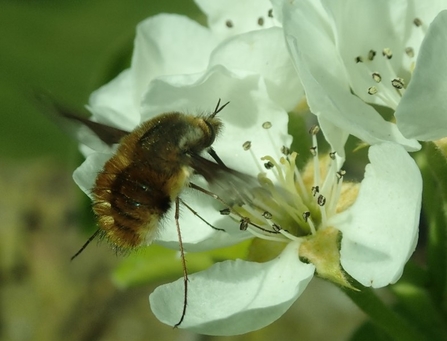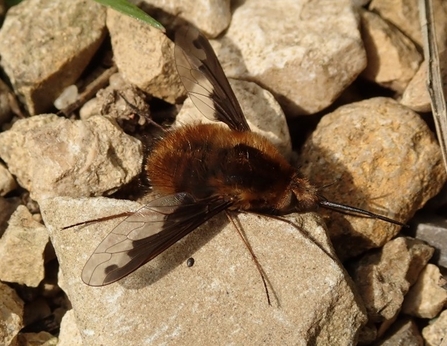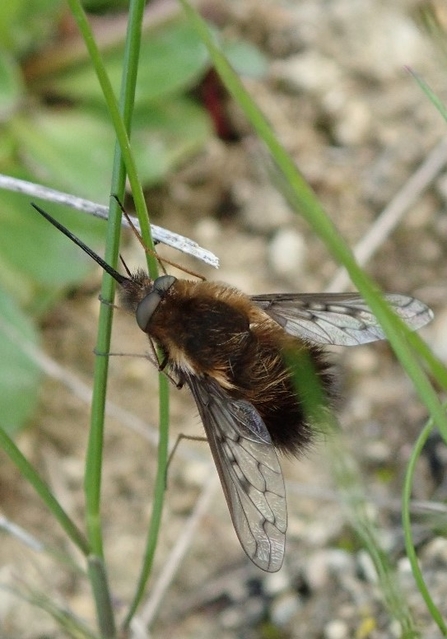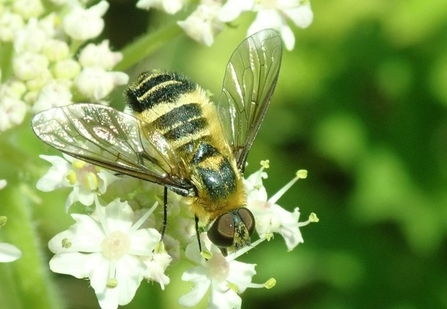When you see a bee-fly you know spring has finally sprung and life is hotting up! Depending on the weather, they can fly anytime from late February and there is one species that will be on the wing until September.
Every spring there is a light-hearted competition to see who will be the first to see a bee-fly, part of ‘Bee-fly Watch’ a national monitoring scheme run by the Soldierflies and Allies Recording Scheme.
The idea is to gather records of this rather cute, distinctively furry little fly, so that we can see how the weather, climate change and other factors such as habitat loss might affect where and when it can be seen.





